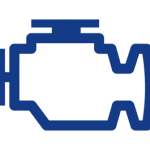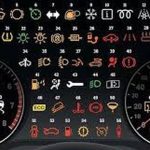OBD (on-board diagnostics) is the system responsible for collecting data from various sensors in a vehicle and processing it, then displaying the results as diagnostic trouble codes or DTCs.
OBD systems are ubiquitous in vehicles manufactured since the 1980s, providing repair technicians with vital information that allows them to identify performance issues before they escalate into costly repairs.
What is OBD?
Your car’s OBD system is a set of protocols that continuously checks the status of various systems and sensors onboard. It generates an standardized series of diagnostic trouble codes across all makes and models, making it simple for mechanics to identify issues and provide fixes.
Additionally, it assists in maintaining the overall health of your car by sending commands to various systems and self-correcting any anomalies with ignition or fuel mixture. Furthermore, it can detect various problems and give an accurate diagnosis, allowing you to get back on the road quickly.
OBD not only gives your mechanic a precise diagnosis, but it also allows fleet managers to track and monitor their vehicles with telematics devices. These silently process data such as engine revolutions, speed, fault codes and fuel consumption in real time.
The OBD protocol comprises several modes, each designed to access specific vehicle parameters like RPM and throttle position. The two most widely used ones are Mode $01 and $09.
In order to use an OBD scanner on your car, it must have a data link connector. Generally located under the dashboard panel and beneath the steering wheel on most models, this connector may be located elsewhere as well.
When your car’s OBD system is malfunctioning, a malfunction indicator light will illuminate on your dashboard. This could be an indication that there is an issue with the engine, gearbox or emissions system.
Although these lights can be an indication that something is amiss, diagnosing the cause can be tricky without professional help. Your mechanic will use an OBD scanner to retrieve vital information from your car’s ECU and use that data for making a diagnosis.
Typically, an OBD scanner is a handheld device that plugs into your car’s OBD port. These standardized scanners all share the same underlying OBD system through an “SAE J1962” data link connector.
These scanners are relatively affordable and can be purchased from any hardware or online retailer. They come in both handheld and fixed versions, enabling auto technicians and owners to decipher the information collected by an OBD system.
What is OBD II?
OBD II is an electronic interface that enables car owners and fleet managers to quickly access vehicle data through standardized connectors. This makes diagnosing vehicle issues simpler, quicker, and more precise.
Telematics and fleet management can also be implemented, providing data on everything from fuel economy and driver behavior to vehicle location and remote diagnostics. Furthermore, this helps prevent costly repairs by enabling users to detect and address problems prior to them occurring.
The OBD port is used by a variety of devices and apps to read data from smartphones, tablets and laptops. These could include GPS trackers, scanners and more.
Many of these devices can also be used to remap software in your vehicle, unlocking horsepower, increasing fuel economy and improving overall performance. But be sure to consult the manufacturer first before installing any modifications.
OBD II’s most prominent feature is the standardized Diagnostic Link Connector (DLC), which permits easy connections to all types of scan tools. This enables technicians to quickly read and clear trouble codes from a vehicle’s engine control unit.
DTCs (Defect Tracking Codes) are specific to a car’s current problems and can be used to quickly identify and fix them before they cause major issues. This saves drivers both time and money, especially in the case of commercial vehicles.
OBD II’s monitoring of emissions, recommended by the EPA, is another essential feature. This helps guarantee cars run as efficiently as possible while cutting back on pollution and emissions.
OBD II will collect information on certain engine parts and systems during this process. If any issues are detected, an illuminated warning light will appear on the instrument panel.
OBD II is an integral component of modern cars and trucks, having been around for some time but only recently becoming accessible to the general public. Mechanics use this technology to diagnose and repair vehicles; now, regular drivers can also benefit from its availability.
What is OBD III?
OBD stands for “On-Board Diagnostics,” an electronic system that monitors and regulates your car’s performance. It uses data collected from a network of sensors to monitor engine health, detect problems, and alert you of them.
OBD (On Board Diagnostics) have been around for years, but its significance was amplified in the late 20th century due to strict emissions regulations and widespread electronic fuel injection. Nowadays, most vehicles feature a standardized system that makes servicing multiple models of cars quick and precise.
At its core, OBD (Electronic Control Unit) is composed of an ECU that collects input from various sensors throughout your vehicle and stores it for later reading through an On-Board Diagnostic port. When sensors detect a problem, these ECUs send out a diagnostic trouble code (DTC) to alert them of the issue.
Once the OBD port is plugged in, an OBD scanner or code reader can read these codes and determine what’s wrong with your car. If the issue is minor, you may only see a few codes when pulling the plug; more serious problems usually illuminate your check engine light as well as generate multiple warnings on your dashboard.
This device works with Android apps like Torque Pro, Torque Lite or OBD Car Doctor to give you real-time information about your vehicle’s systems and clear error codes for things like a loose gas cap. At under $100 price point, if you want to stay informed on what’s happening with your car and check its error codes, this device could be worth exploring further.
Tuners who want to optimize their vehicles often utilize OBD (On Board Diagnostics) to monitor performance and alter software accordingly. While tuning can improve performance, it comes at the cost of fuel economy and reliability.
OBD systems have also been employed to monitor driver behavior, enabling companies to determine whether drivers are obeying traffic laws and following safety protocols. Many insurance companies offer reduced premiums for those who demonstrate they are abiding by all regulations.
What is OBD IV?
OBD (On-Board Diagnostics) is a standard system that enables external electronic devices to communicate with a car’s computer systems. This makes diagnosing and fixing many issues with OBD-equipped vehicles much simpler.
When a sensor sends information outside its expected range, the engine computer (ECU) stores that data in a diagnostic trouble code (DTC). These codes can then be read by an OBD-II scanner to identify and fix the source of the issue.
OBD is not only used to diagnose and fix car problems, but it’s also popular with those looking to maximize their vehicles’ performance through performance tuning. Dongles connected to the OBD port allow users to alter settings or remap software programs in order to increase power output among other things.
Another useful application of OBD is emissions control. When vehicles fail to abide by relevant regulations, OBD can notify users.
Emissions: Since its inception in the 1980s, OBD has become a widely used system to monitor and regulate emissions levels in cars and commercial trucks. This helps ensure EPA adherence to Clean Air Act standards while cutting costs for truck owners.
OBD systems have become an integral component of modern car diagnostics. They collect and store a vast number of metrics from various sensors, even those not directly related to the vehicle’s mechanical components.
Techs can quickly and precisely identify issues, decreasing the chance of missing critical issues. This increases productivity for businesses that must service a large number of vehicles regularly.
OBD also makes it simple to monitor driver behavior. For instance, some auto insurers offer reduced premiums for drivers who demonstrate safe driving practices through data logging.
OBD (On Board Diagnostics) is a standard system that permits you to quickly access diagnostic information and communicate with your vehicle’s computer through a scan tool or diagnostic app. These tools often feature features like freeze frame data, live PID data, and diagnostic reports.





